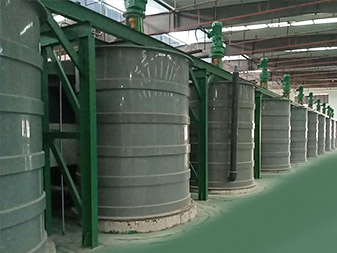Precautions for the use of
polyethylene storage tanks:
1. If there are joints or flanged pipes in the lower part of the storage tank, they should be perpendicular to the wall of the barrel, and soft connections should be used to prevent the uneven expansion of the barrel wall from top to bottom after filling with liquid, resulting in damage to the joint connection and leakage, and damage to the joints and pipes in severe cases. Barrel.
2. The receiver on the equipment should use acid-proof gaskets and seal them, and replace the gaskets in time.
3. The filling and output of the equipment must open the air port to prevent the equipment from being damaged by pressure.
4. Anti-static equipment should be installed for high-resistance organic solvents.
5. The operating environment of equipment and equipment should be far away from the source of vibration and avoid contact with open flames.
6. When storing chemicals in polyethylene anti-corrosion storage tanks, the storage items should be clearly marked. There should be good drainage trenches and dilution facilities around the place where polyethylene anti-corrosion storage tanks are placed.
7. Because the material of the all-plastic flange is softer than the steel plate, the user should check the sealing performance of the polyethylene anti-corrosion storage tank equipment before use, and can add liquid to check for leakage. For storage tanks containing chemical liquids, test for leaks with water to prevent loss.
8. During the transportation and installation of polyethylene anti-corrosion storage tanks, severe impacts and bumps on the equipment body should be avoided.
Horizontal polyethylene anti-corrosion storage tanks should be placed on a foundation made of cement bricks. The foundation is generally made by on-site stacking method, that is: place the horizontal tank at the place of use, then fill it with brick cement, and pay attention to put some sand on the contact surface between the tank body and the brick to fill it, and wait until the cement brick foundation is fully set. , and then feed and use. The height of the base is generally half of the tank body.
The vertical polyethylene anti-corrosion storage tank can be laid flat on the ground first, and then erected. The foundation for installing polyethylene anti-corrosion storage tanks requires the ground to be flat and able to bear the corresponding pressure. Since the bottom of a large-scale vertical polyethylene anti-corrosion storage tank cannot be prevented from protruding into the tank to form a spherical crown when forming, it is recommended to use 2- 6 cm of fine sand is spread in a spherical crown corresponding to the bottom of the tank.

